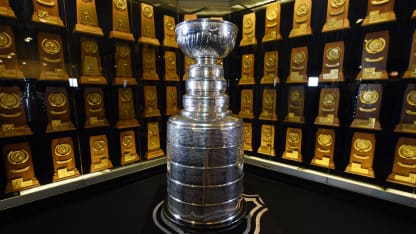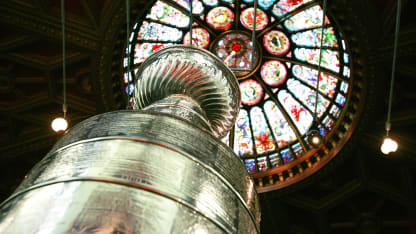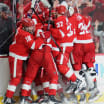From its modest beginnings as a bowl measuring 7.28 inches in height and 11.42 inches in diameter to its larger-than-life status today as arguably the most famous sports trophy in the world, the Stanley Cup has always held sway over the imagination of those who have competed for it.
Its full mystique is on full display at the end of each Stanley Cup Final when an NHL dignitary -- Commissioner Gary Bettman since 1993 -- hands the trophy to the captain of the winning team.
Without fail, it is accepted eagerly and then hoisted effortlessly toward the sky despite its unwieldy combination of height (35.25 inches) and weight (34.5 pounds). Within seconds, the lucky captain is swarmed by teammates eager to touch the object of their affection.
"There's so many good things about the game of hockey, but the greatest things about our sport are our history and our tradition and, without question, the Stanley Cup is probably the greatest trophy in all of sport," said Wayne Gretzky, the captain of the Edmonton Oilers dynasty that won the Stanley Cup four times in a five-season span between 1984 and 1988. He went through the handoff ceremony each time the Oilers won.
Gretzky has spent his fair share of time with the spoils of the ultimate playoff victory and knows better than most what the trophy means to those who earn it.
"If you are lucky enough to get your name on that Stanley Cup, that is what is so unique and it is so difficult to win a Stanley Cup," Gretzky said on Sept. 27, when he was announced as the League's Centennial Ambassador. "As you see today, the parity with these 30 teams, it is really difficult. So, when you get to lift it, it's really worth it."
The trophy has always been about more than the shiny nickel and silver alloy of which it is now composed. The dreams of the young and the accomplishments of the aged in its pursuit have always defined the trophy as much as its appearance.
"It's tough to beat the allure that the Stanley Cup has," Pittsburgh Penguins defenseman Ian Cole said when he spent a day with the trophy after he and his teammates defeated the San Jose Sharks in a six-game Final last June.
"It's about dreams and them coming true and being able to share it with everybody," Penguins captain Sidney Crosby said in July when he brought the trophy to his hometown of Cole Harbour, Nova Scotia, for the second time, again sharing it with family, and friends.



















